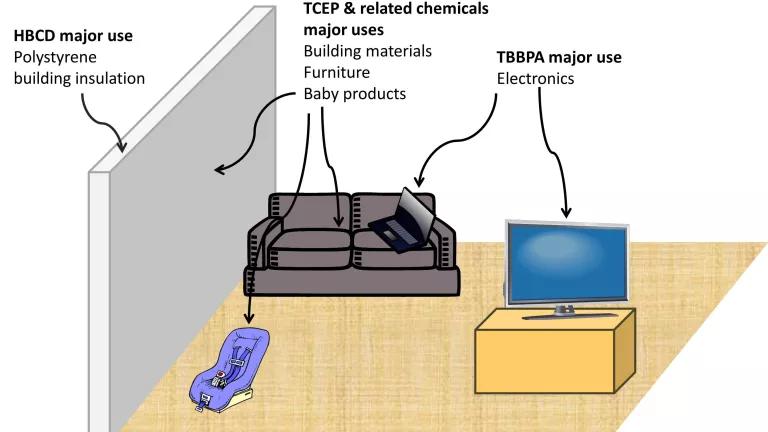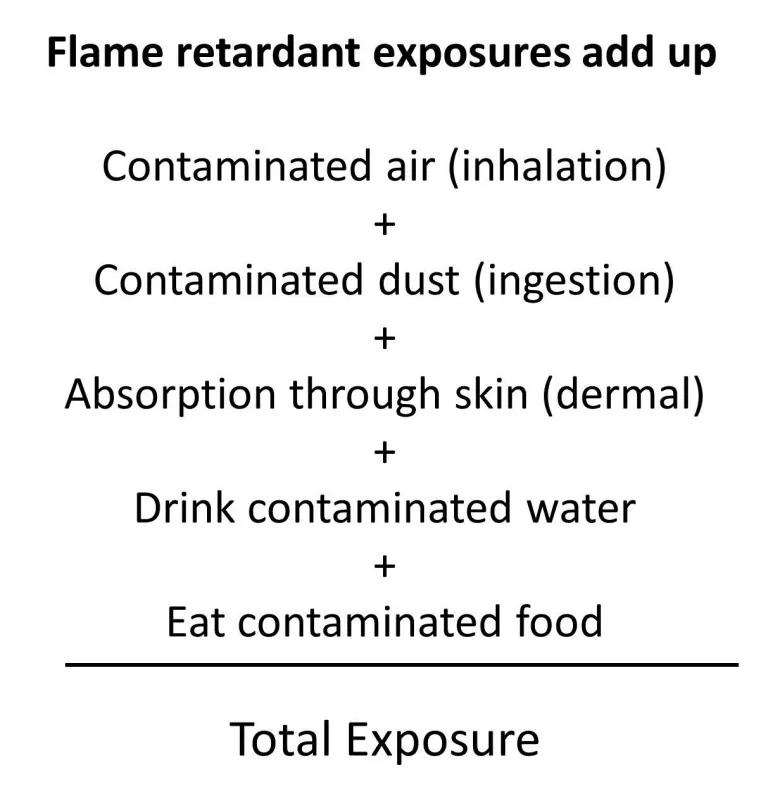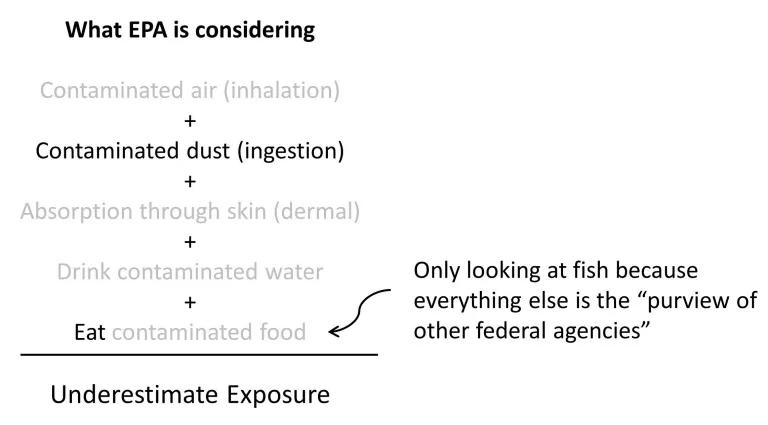
Last night my partner, who is attempting to cut back on his excessive chocolate consumption, tried to convince me that the chocolate he ate at work earlier in the day "didn't count" and that he should be allowed to eat one more chocolate bunny. I didn't buy it and ate the bunny instead (and it was delicious). I won that debate because common sense tells us that it doesn't matter where it came from—each piece of chocolate adds up, so he reached his quota whether he ate the chocolate at work or at home.
You'd think the U.S. Environmental Protection Agency could follow the same logic. But somehow, the simple fact that each little piece counts seems elusive time after time in their chemical safety assessments. And their accounting is much more consequential for our health than one extra chocolate bunny after dinner (or lunch).
That's because the EPA determines the health risks we face from a chemical based in part on how much of that chemical gets into our bodies. Less chemical means less risk. So if lots of "little pieces" are missing from the EPA's addition, that means their final sum will be too small—and maybe in a big way.
The EPA's taking a look right now at the risks of three different "clusters" of flame retardant chemicals—like a family, these clusters are groups of related chemicals. The jumble of letters and long chemical names probably don't mean much to you, but if you're using a computer, sitting on a couch or padded chair, or inside a building right now, you're almost certainly breathing in or touching one or more of these very chemicals, shown in the table.
Table: Three clusters of flame retardant chemicals are under evaluation at the EPA right now. All are associated with significant health concerns.
| Flame retardants | Major health concerns |
|---|---|
| Hexabromocyclododecane (HBCD) and related chemicals | Endocrine disruption (thyroid hormones); liver toxicity |
| Tetrabromobisphenol-A (TBBPA) and related chemicals | Cancer; developmental toxicity |
| Tris(2-chloroethyl) phosphate (TCEP) and related chemicals | Cancer; kidney, liver and nervous system toxicity |

The EPA decided to tackle these chemicals because they stand out with serious health concerns and widespread human exposure—they contaminate the bodies of practically every man, woman and child in the country. They are ubiquitous in the products we use every day and they migrate out of these products into the air and dust of our homes, offices and schools. A flame retardant chemical enters our bodies when we breathe it in, accidentally get dust in our mouths, absorb it through our skin from contaminated air and dust, and ingest contaminated food and water. This is called the "aggregate exposure" for a chemical—it's the total amount that gets into us through all the different routes.
But the EPA is proposing to not look at this total exposure for their safety evaluations. For example, in the TBBPA evaluation, they account for one of the five routes (dust), and account for just one tiny part of another—food, for which they only consider fish.

The EPA's justification for not adding in exposures from other foods is a particular head-scratcher—they state that those would be the "purview of other federal agencies." The flame retardants are present in food and will enter our bodies when we eat contaminated food. These exposures will contribute to our total exposure regardless of which agency is responsible and therefore need to be considered.
Leaving out the inhalation pathway of exposure seems particularly problematic for the cluster of TCEP and related chemicals. The title of a recent study (Schreder, et al 2016) says why: "Inhalation a significant exposure route for chlorinated organophosphate flame retardants." (Chlorinated organophosphate flame retardants means the cluster of TCEP and related chemicals.)
We commented on these weaknesses, and many others, in the extensive technical comments (pdf) we submitted to the EPA last year, in collaboration with Earthjustice and Washington Toxics Coalition.
The EPA needs to account for known exposures using available data, models, or estimates as needed. When not enough data are available to make quantitative estimates, defaults can be used to account for the missing information, as the National Academy of Sciences has recommended. The EPA has established some scientifically based default assumptions that are used when information about toxicity is missing or unreliable. For example, if the only available toxicity data is from adult animals, adjustments are made to account for the potential increased susceptibility of humans compared to animals, and the higher susceptibility of children compared to adults. The numerical value of these standard default factors is typically threefold or tenfold, depending on the degree of missing information, and the judgment of the agency. Similar default values should be developed to account for missing exposure information.
The analysis in these assessments serves as the foundation for decisions that will affect every single person. We can't make good decisions based on incomplete information, and we shouldn't draw conclusions about the safety of a chemical without accounting for the reality of how (and how much) people are being exposed in the real world. The EPA's determinations will be even more important with reforms being proposed to the Toxic Substances Control Act (TSCA) that would limit the opportunity of states to take protective actions—so it's more critical than ever that the EPA get this right. Read more about TSCA, these flame retardant risk assessments, and the troubling pattern we found of companies using "confidential business information" claims to conceal basic information about these chemicals on Earthjustice attorney Eve Gartner's blog here.


